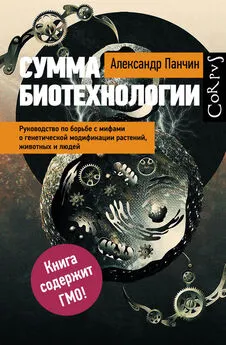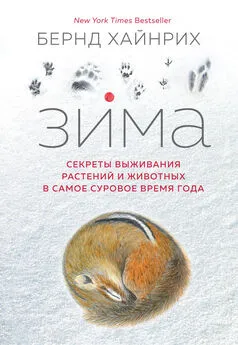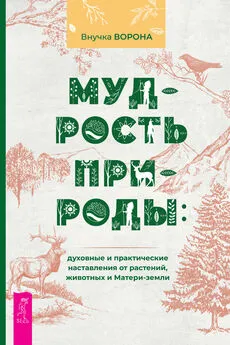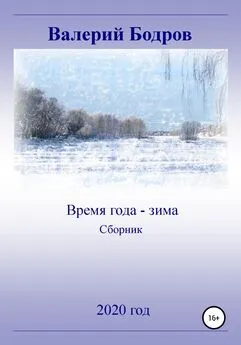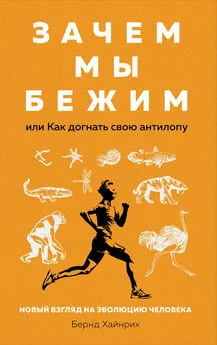Берндт Хайнрих - Зима: Секреты выживания растений и животных в самое суровое время года
- Название:Зима: Секреты выживания растений и животных в самое суровое время года
- Автор:
- Жанр:
- Издательство:Литагент Аттикус
- Год:2021
- ISBN:978-5-389-20228-3
- Рейтинг:
- Избранное:Добавить в избранное
-
Отзывы:
-
Ваша оценка:
Берндт Хайнрих - Зима: Секреты выживания растений и животных в самое суровое время года краткое содержание
В формате PDF A4 сохранен издательский макет.
Зима: Секреты выживания растений и животных в самое суровое время года - читать онлайн бесплатно ознакомительный отрывок
Интервал:
Закладка:
J. R. Speakman and P. A. Racey . (1989). Hibernal ecology of the pipistrelle bat: Energy expenditure, water requirements and mass loss, implications for survival and the function of winter emergence flights // J. Animal Ecology. 58. P. 797–813.
M. D. Tuttle . (1979). Status, causes of decline and management of endangered gray bats // J. Wildlife Management. 43. P. 1–17.
F. A. Urquhart . (1976). Found at last: The monarch’s winter home // National Geographic Magazine. 150. P. 160–173.
_. (1987). Monarch Butterfly, the International Traveler. Chicago: Nelson-Hall.
_ and N. R. Urquhart . (1976). The overwintering site of the eastern population of the monarch butterfly ( Danaus plexippus ; Danaidae) in southern Mexico // J. Lepid. Soc. 30. P. 153–158.
P. W. Gorenzel and T. P. Salmon . (1995). Characteristics of American crow urban roosts in California // J. Wildlife Management. 59(4). P. 638–645.
H. G. Hanson . (1946). Crow centers of the United States // Oklahoma Game and Fish News. 2(3). P. 4–7, 18.
B. Heinrich . (1989). Communal roosts // B. Heinrich. Ravens in Winter. New York: Simon and Schuster. P. 159–165.
J. M. Marzluff, B Heinrich and C. S. Marzluff . (1996). Roosts are mobile information centers // Animal Behav. 51. P. 89–103.
R. Shine and R. Mason . (2001). Serpentine cross-dressers // Natural History. 110. February. P. 56–61.
P. C. Stouffer and D. F. Caccamise . (1991). Roosting and diurnal movements of radio-tagged American crows // Wilson Bull. 103(3). P. 387–400.
D. H. Morse . (1977). Feeding behavior and predator avoidance in heterospecific groups // BioScience. 27(5). P. 332–339.
E. Thaler . (1990). Die Goldhähnchen. Wittenberg Lutherstadt: A. Ziemsen Verlag.
W. H. Karasov . (1993). In the belly of the bird // Natural History. 102. November. P. 32–37.
E. W. Stiles . (1984). Fruit for all seasons // Natural History. 93. August. P. 43–53.
G. L. Alt and J. M. Grutladavria . (1984). Reuse of black bear dens in northeastern Pennsylvania // J. Wildlife Management. 48. P. 236–239.
H. J. Harlow, T. Lohuis, T. D. I. Beck and P. A. Iaizzo . (2001). Muscle strength in overwintering bears // Nature. 409. P. 997.
R. B. Johnson . (1998). The bearable lightness of being: Bones, muscles, and spaceflight // Anatomical Record. 253(1). P. 24–27.
J. D. Jones, P. Burnett and P. Zollman . (1999). The glyoxylate cycle: Does it function in the dormant or active bear? // Compar. Biochem. and Physiol. B. 124. P. 177–179.
A. LeBlanc, C. Lin, L. Shackelford, V. Sinitsyn, H. Evans, O. Belichenko, B. Schenkman, I. Kozlovskaya, V. Oganov, A. Bakulin, T. Hedrick and D. Feeback . (2000). Muscle volume, MRI relaxation times (T2), and body composition after spaceflight // J. Applied Physiol. 89(6). P. 2158–2164.
M. K. Miller . (1995). Space makes strange bedfellows // The Sciences. 35(3). P. 12–16.
R. A. Nelson, T. D. I. Beck and D. L. Steiger . (1984). Ration of serum urea to serum creatine in wild black bears // Science. 226. P. 841–842.
O. A. Ormseth, M. Nicolson, M. A. Pellymounter and B. B. Boyer . (1996). Leptin inhibits prehibernation hyperphagia and reduces body weight in arctic ground squirrels // Amer. J. Physiol. 271(6). P. 1775.
A. C. Rerkin . (1989). Sleeping beauties // Discover. April. P. 62–65.
L. Rogers . (1981). A bear in its lair // Natural History. 90. October. P. 64–70.
W. D. Tietje and R. L. Ruff . (1980). Denning behavior of black bears in boreal forest of Alberta // J. Wildlife Management. 44(4). P. 858–870.
D. B. Tinker, H. J. Harlow and T. D. I. Beck . (1998). Protein use and muscle-fiber changes in free-ranging, hibernating black bears // Physiol. Zool. 71. P. 414–424.
R. J. White and M. Avener . (2001). Humans in space // Nature. 409. P. 1115–1118.
E. M. Addison, R. D. Strickland and D. J. H. Fraser . (1989). Gray Jays, Perisoreus canadensis , and Common Ravens, Corvus corax, as predators of winter ticks, Dermacentor albipictus // Can. Field Nat. 103(3). P. 406–408.
N. S. Clayton and D. W. Lee . (1998). Memory and the hippocampus in food-storing birds // R. P. Balda, I. M. Pepperberg, and A. C. Kamil (eds.). Animal Cognition in Nature. San Diego and London: Academic Press. P. 99–118.
N. S. Clayton and J. R. Krebs . (1994). Hippocampal growth and attrition in birds affected by experience // Proc. Nat. Acad. Sci. USA. 91. P. 7410–7414.
D. D. Dow . (1965). The role of saliva in food storage by the Gray Jay // Auk. 82. P. 139–154.
B. Heinrich . (1988). Winter foraging at carcasses by three sympatric corvids, with emphasis on recruitment by the raven, Corvus corax // Behav. Ecol. and Sociobiol. 23. P. 141–156.
_. (1999). Mind of the Raven. New York: HarperCollins.
B. Heinrich and J. Pepper . (1998). Influence of competitors on caching behavior in the Common Raven, Corvus corax // Anim. Behav. 56. P. 1083–1090.
H. K ä llander and H. D. Smith . (1990). Food storing in birds: An evolutionary perspective // D. M. Powers (ed.). Current Ornithology. Vol. 7. New York and London: Plenum Press. P. 147–207.
J. M. Marzluff, B. Heinrich and C. S. Marzluff . (1996). Roosts are mobile information centers // Anim. Behav. 51. P. 89–103.
D. R. Stahler, B. Heinrich and D. W. Smith . (2002). The raven’s behavioral association with wolves // Anim. Behav. 64. P. 283–290.
D. Strickland . (1991). Juvenile dispersal in Gray Jays: Dominant brood member expels siblings from natal territory // Can. J. Zool. 69. P. 2935–2945.
D. Strickland and H. Ouellet . (1993). Gray Jay // A. Poole and F. Gill (eds.). The Birds of North America. No. 40. Philadelphia: Academy of Natural Sciences. Washington, D. C.: American Ornithologists’ Union.
S. B. Vander Wall and R. P. Balda . (1981). Ecology and evolution of food-storage behavior in conifer seed-caching corvids // Z. Tierpsychol. 56. P. 217–242.
_. (1983). Rememberance of seeds stashed // Natural History. 92. P. 60–65.
S. B. Vander Wall and H. E. Hutchins . (1983). Dependence of Clark’s Nutcracker, Nucifraga columbiana, on conifer seeds during the postfledging period // Can. Field Nat. 97. P. 208–214.
T. A. Waite and D. Strickland . (1997). Cooperative breeding in Gray jays: Philopatric offspring provision juvenile siblings // Condor. 99. P. 523–525.
K. von Frisch . (1967). The Dance Language and Orientation of Bees. Cambridge, Mass.: Harvard University Press.
B. Heinrich . (1979). Thermoregulation of African and European honeybees during foraging, attack, and hive exits and returns // J. Exp. Biol. 80. P. 217–229.
_. (1981). The mechanisms and energetics of honeybee swarm temperature regulation. J. Exp. Biol. 91. P. 25–55.
M. Lindauer . (1954). Temperaturreguliering und Wasserhaushalt im Bienenstaat // Z. Vergl. Physiol. 34. P. 299–345.
_. (1955). Schwarmbienen auf Wohnungsuche // Z. Vergl. Physiol. 37. P. 263–324.
T. D. Seeley . (1985). Honeybee Ecology: A Study of Adaptation in Social Life. Princeton, N. J.: Princeton University Press.
T. D. Seeley and R. A. Morse . (1982). How do honeybees find a home? // Scientific American. 247. October. P. 158–168.
T. D. Seeley and J. Tautz . (2001). Worker piping in honeybee swarms and its role in preparing for liftoff. // J. Comp. Physiol. A. 187. P. 667–676.
B. Heinrich . (1996). When the bough bends // Natural History. 2(96). P. 56–57.
A. C. Bent . (1964). Life Histories of North American Thrushes, Kinglets and Their Allies. U. S. Nat. Mus. Bull. No. 196. New York: Dover Publications.
C. R. Blem and J. F. Pagels . (1984). Mid-winter lipid reserves of the golden-crowned kinglet // Condor. 86. P. 461–492.
W. Brewster . (1888). Breeding of the golden-crowned kinglet ( Regulus satrapa ) in Worcester County, Massachusetts, with a description of its nest and eggs // Auk. 5. P. 337–344.
K. Brockie . (1984). One Man’s Island. New York: Harper and Row.
R. M. DeGraaf and M. Yamasaki . (2001). New England Wildlife. Hanover and London: University Press of New England.
M. Desfayes .(1965). Biosystematics note of the genus Regulus // Ardea. 53. P. 82.
P. R. Ehrlich, D. S. Dobkin and D. Wheye . (1992). Birds in Jeopardy. Stanford, Ca.: Stanford University Press.
R. Galati . (1991). Golden-crowned Kinglets: Treetop Nesters of the North Woods. Ames, Iowa: Iowa State University Press.
R. Galati and C. Galati . (1985). Breeding of the golden-crowned kinglet in northern Minnesota // J. Field Ornithol. 56. P. 28–40.
J. W. Graber and R. R. Graber . (1979). Severe weather and bird populations in southern Illinois // Wilson Bull. 91(1). P. 88–103.
R. R. Graber and J. W. Graber . (1963). A comparative study of bird populations in Illinois, 1906–1909 and 1956–1958 // Ill. Nat. His. Surv. Bull. 28. P. 283–528.
W. Gstader . (1973). Jahresdynamik der Avifauna des Südwestlichen Innsbrucker Mittelgebirges // Monticola. 3. P. 1–68.
B. Heinrich . (1992). The Hot-Blooded Insects. Cambridge, Mass.: Harvard University Press.
B. Heinrich and R. Bell . (1995). Winter food of a small insectivorous bird, the Golden-crowned Kinglet // Wilson Bull. 107. P. 558–561.
O. Hilden . (1982). Winter ecology and partial migration of the Goldcrest, Regulus regulus in Finland // Ornis Fenn. 59. P. 99–122.
O. Hogstad . (1984). Variation in numbers, territoriality and flock size of a Goldcrest, Regulus regulus population in winter // Ibis. 126. P. 296–306.
J. L. Ingold, L. A. Weight and S. I. Guttman . (1988). Genetic differentiation between North America kinglets and comparisons with three allied passerines // Auk. 105. P. 386–390.
J. L. Ingold and R. Galati . (1997). Golden-crowned kinglet ( Regulus satrapa ) // A. Poole and F. Gill (eds.). The Birds of North America. No. 301. Philadelphia: Academy of Natural Sciences. Washington, D. C.: American Ornithologists’ Union.
W. Kania . (1983). Preliminary remarks on the migration of North European Goldcrests, Regulus regulus // Ornis. Fenn. Suppl. 3. P. 19–20.
M. A. Kubisz . (1989). Burdock as a hazard to Golden-crowned kinglets and other small birds // Ont. Birds. 7. P. 112–117.
Читать дальшеИнтервал:
Закладка:
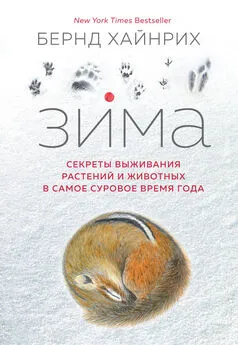
![Берндт Хайнрих - Зачем мы бежим, или Как догнать свою антилопу [Новый взгляд на эволюцию человека] [litres]](/books/1057566/berndt-hajnrih-zachem-my-bezhim-ili-kak-dognat-svo.webp)

